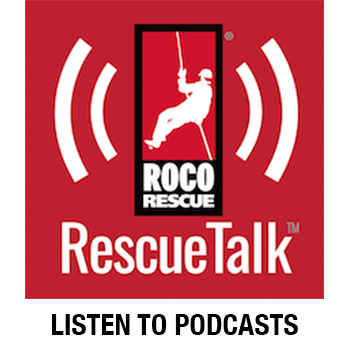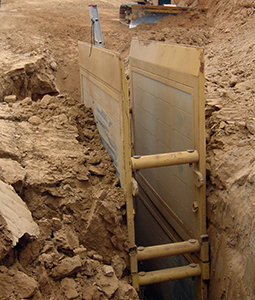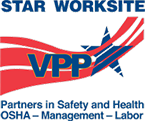
We recently had a Facebook inquiry about attaching a rappeler's belay line (safety line) to their high-point dorsal connection on their harness. We choose to do this for a number of reasons including: (a) compliance with applicable regulations; (b) adherence to safe and practical rescue procedures; and, (c) the physiological effects of falls – how the body absorbs an impact force. Let’s take a general look at these considerations.
ComplianceOSHA considers our rappel/lower main lines as “work positioning” lines and our belay or safety lines as “fall protection.” The fact that they and we, as rescuers, consider the safety line as fall protection, or more accurately as our Personal Fall Arrest System (PFAS), kicks in a few requirements and considerations for all private sector responders and for municipal responders governed by OSHA-approved State Plans. These responders are required to comply with applicable OSHA regulations.
However, keep in mind, these regulations are designed to protect workers (and rescuers) from harm and injury. During training, since it is not a real rescue, we should be following the applicable regulations and standards for safety as well as liability reasons. Even during actual rescues, it is important to adequately protect our people from injury. The days of “rescue at all costs” are gone. We are responsible for designing training, systems and SOPs/SOGs that protect our people in a rescue situation.
Note the following key points from OSHA 1926.502(d):• Limiting the free fall distance (max free fall 6 feet)
“…be rigged such that an employee can neither free fall more than 6 feet (1.8 m), nor contact any lower level”
• Deceleration distance of 3.5 feet (41 inches)
“…bring an employee to a complete stop and limit maximum deceleration distance an employee travels to 3.5 feet (1.07 m)”
• Maximum allowable impact load 1,800lbf.
“…limit maximum arresting force on an employee to 1,800 pounds (8 kN) when used with a body harness”
• Improvised anchorage strengths of 5,000lbf or twice the anticipated load.
“Anchorages used for attachment of personal fall arrest equipment shall be…capable of supporting at least 5,000 pounds (22.2 kN) per employee attached…”
“Have sufficient strength to withstand twice the potential impact energy of an employee free falling a distance of 6 feet (1.8 m), or the free fall distance permitted by the system, whichever is less.”
“The attachment point of the body harness shall be located in the center of the wearer's back near shoulder level, or above the wearer's head.”
You may have heard the statement, “Firefighters/rescuers don't need fall protection or need to follow OSHA.” This is not true for the 27 State Plan states where OSHA regulations do apply to public sector employees including emergency responders. It puts the burden on the employer, agency or department to establish fall protection and rescue protocols that would adequately protect their people.
To illustrate this, here is an excerpt from an article written by Stephen Speer, a NY career firefighter, for “Fire Rescue” magazine which deals with potential OSHA violations during rescue operations and training exercises. (Note: New York is a State-Plan state.)
“I spoke to a New York State Public Employee Safety & Health (PESH) supervisor about the following scenario and asked if there were areas that could be potential violations.
Scenario: A firefighter operating from a roof ladder is cutting a ventilation hole on a pitched roof. The firefighter falls from the roof and is injured.
In what areas, if any, could an incident commander or company officer be cited? In response, I received 12 pages of documentation. The documents showed that in evaluating potential violations of the general duty clause to see if anyone is responsible, the following four elements must be met:
1. The employer failed to keep the workplace free from a hazard to which employees of that employer were exposed.2. The hazard was recognized.
3. The hazard was causing or likely to cause death or serious physical harm.
NFPA 1500, chapter 8.5.1.1, states that operations should be limited to those that can be completed safely. In this scenario, there is the potential for citation if all four elements apply. As the above scenario illustrates, whether or not you have an aerial apparatus, you must consider fall arrest protection.”
PracticalityWhen rescuers are sent into a vertical confined space, we use the safety line (PFAS) to protect them as they are being lowered and raised from the space. It is also used as “an immediate means of retrieval” should something go wrong inside the space. Having the safety/retrieval line attachment point at the high-point dorsal position allows us to attempt an emergency retrieval with the victim being extracted in a low profile to fit through a narrow portal.
Physiological EffectsThere have been numerous studies on the effects on the body when subject to a fall and arrest while in a harness. They generally come to the same conclusion that high-point dorsal attachment is the most survivable and provides for the greatest injury reduction. Here are excerpts from two studies.
1) Excerpt from a study conducted by Dr. M. Amphoux entitled, “Exposure of Human Body in Falling Accidents,” which he presented at the International Fall Protection Seminar in 1983:
In experiments on the position of the attachment point on the harnesses, Amphoux found that a high attachment point was preferable because “it gave a better-disposed suspension” and that it was “especially effective when the attachment is on the back. When the falling stops, the neck flexes forward. If the attachment point is in the front of the sternum, the neck flexes backwards and the lanyard may strike the face.”
Amphoux continued that it would be better for the compression to be localized on the body of vertebrae and not on the posterior joints, which were too fragile. “Therefore,” he said, “the attachment point would be better on the back than pre-sternal and should be high enough to reduce the potential neck injury. In addition, the forward flexion would be stopped by the thrust of the chin on the chest.”
This was why Amphoux and his colleagues strictly recommended attachment high on the back. It also protected the face from the lanyard when falling. In the case of falling head first, regaining a feet-first position would involve flexion of the head, whereas if the attachment were pre-sternal, the head would more often be projected backwards [whiplash effect].
However, it was accepted that a front attachment might be preferred in a few working situations. This was only acceptable when the height of the potential fall was very short. Whatever the choice of body support, it should not be forgotten that it was only a compromise and not a guarantee of absolute security.
2) Excerpt from “Survivable Impact Forces on Human Body Constrained by Full Body Harness,” HSL/2003/09 by Harry Crawford:
The one-size-fits-all policy of some harness manufacturers may not be suitable for the range of body weight 50kg to 140kg. Although it may be possible for those in the wide range of body weight/size to don such a harness, the position of the harness/lanyard attachment is of paramount importance. For best performance and least risk of injury, the attachment should be as high as possible between the shoulder blades.
Note: They also concluded that the shorter the fall, the less impact and less chance of injury no matter which type of harness or where the connection point was.
Like any rescue or work safety technique, you need to look at all the variables and decide which technique and equipment will best protect you or your co-workers. We choose the high-point back connection because of the variety of situations and locations we might face during a rescue based on the three considerations mentioned earlier in this article.
Thanks for a great question and taking the time to look into the reasons why systems or techniques are used. I hope this answers your question. If you have additional questions, please contact me at 800-647-7626.
By Dennis O'Connell, Roco Director of Training



 One of OSHA’s
One of OSHA’s  Now that NFPA 1006 Standard for Technical Rescue Personnel Professional Qualifications (2017 edition) has been in place for a while, it’s a good time to revisit the changes that have been made. While we won’t go into every single change from the previous 2013 edition, we will cover some of the more significant ones – particularly for the specialty areas that we deal with most.
Now that NFPA 1006 Standard for Technical Rescue Personnel Professional Qualifications (2017 edition) has been in place for a while, it’s a good time to revisit the changes that have been made. While we won’t go into every single change from the previous 2013 edition, we will cover some of the more significant ones – particularly for the specialty areas that we deal with most. 


